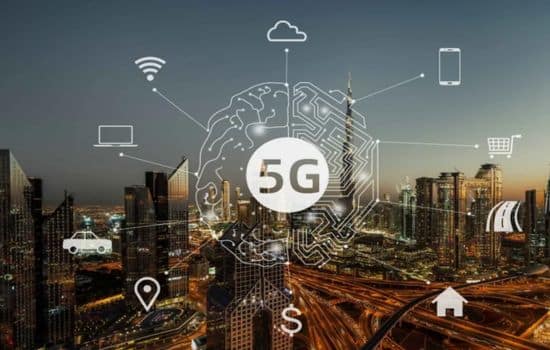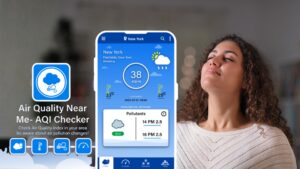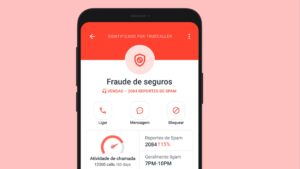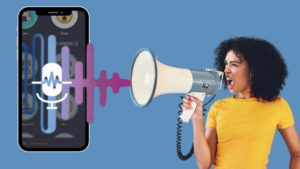With the rise of 5G technology, internet connection speeds have reached impressive levels, offering a much faster and more efficient browsing and downloading experience.
However, not all 5G connections are created equal, and in some cases, you may experience a weaker signal or lower-than-expected connection speed.
This can be frustrating, especially if you're in the middle of a live stream, downloading large files, or playing an online game.
Fortunately, there are several ways to improve your 5G connection, and the right apps can make a big difference.
In this article, we'll explore how to improve your 5G connection, how to run speed tests to detect problems, and how an app like Opensignal can help you optimize your browsing experience.
Why isn't my 5G connection as fast as it should be?
5G has been touted as the next big revolution in mobile connectivity, promising speeds far superior to 4G and extremely low latency. However, several factors can affect the quality of your 5G connection, even if you're in an area covered by this advanced technology.
1. 5G network coverage and availability
Although 5G is expanding rapidly, not all areas are equally covered by this network. In many cities and regions, 5G networks are limited or in the rollout phase.
This can result in an inconsistent connection, where in some locations you experience fast speeds, while in others you are left with a weak or intermittent signal.
2. Signal interference
The 5G signal can be affected by interference from other devices, buildings, physical obstacles, and, in some cases, network congestion. If you live in a densely populated city or in a building with many thick walls, you may experience an unstable or low-quality connection.
3. Device capacity
The mobile device you're using can also influence the quality of your 5G connection. Not all smartphones are designed to take full advantage of the 5G network.
Some older or lower-end models don't support faster 5G frequencies or may have processing power limitations, impacting connection speeds.
4. Network congestion
If many users are connected to the same 5G tower in a high-density area, the network may experience congestion. This means that even if you're connected to the 5G network, download and upload speeds may be slower due to high network demand.
How do I improve my 5G connection?
Despite these challenges, there are several steps you can take to improve the quality of your 5G connection and ensure you get the best possible experience.
1. Check 5G coverage in your area
The first step is to make sure you have 5G coverage in your area. Many cities are in the process of expanding 5G coverage, but not all locations have access to this technology. Check with your mobile operator to see if 5G is available in your area. You can also check apps that measure 5G coverage to get a more accurate picture.
2. Make sure your device is compatible with 5G
Not all devices are compatible with 5G, and some phones can only access certain frequency bands. Make sure your device is compatible with the 5G bands offered by your carrier. If your phone isn't compatible, consider upgrading to a device that is compatible to take advantage of the faster speeds of the 5G network.
3. Run speed tests
If you suspect your 5G connection isn't working properly, running a speed test is a critical step. This will allow you to measure the actual download and upload speeds on your device and determine if you're getting the connection quality you expect.
4. Change location
Location also plays a significant role in the quality of your connection. If you're indoors or far from a 5G tower, your signal may be weaker. Try moving to a different location, such as near a window or in a more open area, to see if the signal improves. This can help improve your connection without the need for additional adjustments.
5. Use applications to improve the signal
There are several apps that allow you to measure and optimize the quality of your 5G connection. These apps can help you identify the areas of your home or city where the signal is strongest, as well as make adjustments to your device settings to achieve better speeds. One of the most useful apps in this regard is Opensignal.
- Apps to Detect Impurities in the Air
- Free Apps to Learn English
- Apps to Try Beard Styles
- The best music recognition apps
- Apps to Block Fraud Calls
Opensignal: The app to test and improve your 5G connection
Opensignal is a free application that allows users to measure the quality of their internet connection, including 5G, 4G, and Wi-Fi networks.
This app provides accurate information about download and upload speeds, latency, and network coverage, allowing you to identify issues and optimize your browsing experience.
Next, we explore the main features of Opensignal and how it can help improve your 5G connection.
1. Main features of Opensignal
1.1 5G Speed Test
The main function of Opensignal It is the speed test, which allows you to measure the actual speed of your 5G connection in terms of download, upload, and latency.
This is useful for assessing whether you're getting the expected performance from your 5G network and whether there are any discrepancies between the speeds promised by your operator and reality.
1.2 5G Coverage Map
Opensignal offers a 5G coverage map that allows you to see the signal strength in different areas. Using this tool, you can identify areas where the 5G signal is strongest and therefore improve your browsing experience.
This map also lets you see how 5G coverage compares to 4G coverage, giving you a clear view of your carrier's coverage areas.
1.3 Network quality analysis
In addition to the speed test, Opensignal It also provides you with a detailed analysis of network quality. This includes information about latency (the time it takes for the signal to travel from your device to the server) and connection consistency. With this information, you can identify if there are any network interruptions or issues affecting your connection.
1.4 Comparison of operators
If you have any doubts about the quality of your 5G connection, Opensignal It allows you to compare your carrier's performance with others in your area. This will help you see if your carrier is offering quality 5G service or if you should consider switching to another provider that offers better results in terms of speed and coverage.
1.5 Detailed report and recommendations
When using Opensignal, you can access a detailed report on your connection's performance. This report will provide you with personalized recommendations to improve your signal, such as changing your device's location, checking coverage, or adjusting your device's settings.
2. How to use Opensignal to improve your 5G connection?
Wear Opensignal It's simple and requires no technical knowledge. Here's how you can use this app to optimize your 5G connection:
2.1 Download and installation
The first thing you should do is download Opensignal from the Google Play Store or the App Store. The app is free, though it offers premium options for more detailed reports and additional features.
2.2 Perform a speed test
Once the application is installed, open it Opensignal and run a speed test. This will give you an accurate assessment of your 5G connection speed, allowing you to see if you're getting the performance you expect from your network.
2.3 Consult the coverage map
Check the 5G coverage map in the app to see which areas have the strongest signal. This will allow you to choose a location with a better signal and get the most out of your 5G connection.
2.4 Review the network analysis
Review the network analysis for details on your connection's latency and stability. If you experience latency issues or interruptions, the app can provide suggestions to improve your connection quality.
3. Benefits of using Opensignal
Wear Opensignal offers several benefits that can help you improve your 5G connection and get the most out of this technology:
3.1 Accurate speed measurement
Opensignal It gives you an accurate measurement of your connection speed, allowing you to know if you're actually getting the performance promised by your operator.
3.2 Better understanding of coverage
The 5G coverage map gives you a clear view of areas where the signal is strongest, allowing you to move your device to a better location for a more stable connection.
3.3 Identifying network problems
Opensignal It allows you to identify network problems, such as high latency or inconsistent connectivity, giving you the opportunity to take steps to improve the quality of your connection.
3.4 Comparison of operators
By comparing the performance of different carriers, you can choose the provider that offers the best 5G service in your area, ensuring a better browsing experience.
Conclusion
Upgrading your 5G connection is crucial to taking full advantage of the technology's benefits, such as high download speeds and low latency.
Tools such as Opensignal They allow you to perform speed tests, analyze network quality, and obtain detailed information about coverage in your area.
By using this app, you can optimize your browsing experience and ensure you're getting the best performance from your 5G connection.






